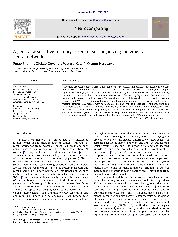摘要
This paper proposes a general associative memory (GAM) system that combines the functions of other typical associative memory (AM) systems. The GAM is a network consisting of three layers: an input layer, a memory layer, and an associative layer. The input layer accepts key vectors, response vectors, and the associative relationships between these vectors. The memory layer stores the input vectors incrementally to corresponding classes. The associative layer builds associative relationships between classes. The GAM can store and recall binary or non-binary information, learn key vectors and response vectors incrementally, realize many-to-many associations with no predefined conditions, store and recall both static and temporal sequence information, and recall information from incomplete or noise-polluted inputs. Experiments using binary data, real-value data, and temporal sequences show that GAM is an efficient system. The AM experiments using a humanoid robot demonstrates that GAM can accommodate real tasks and build associations between patterns with different dimensions.
- 出版日期2013-3-15
- 单位南京大学
